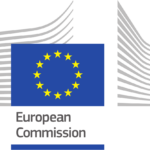 In the context of the fight against the coronavirus pandemic, the European Commission launched the COVID-19 Clinical Management Support System (CMSS). The aim is to support doctors, nurses, and other healthcare professionals in hospitals that are currently dealing with COVID-19 cases all over the EU, UK and the EEA countries. This system allows for the professionals to communicate easily with colleagues, exchange knowledge, discuss cases and improve training, namely via webinars. For more information click here.
In the context of the fight against the coronavirus pandemic, the European Commission launched the COVID-19 Clinical Management Support System (CMSS). The aim is to support doctors, nurses, and other healthcare professionals in hospitals that are currently dealing with COVID-19 cases all over the EU, UK and the EEA countries. This system allows for the professionals to communicate easily with colleagues, exchange knowledge, discuss cases and improve training, namely via webinars. For more information click here.
informer
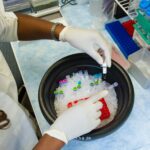 Gaucher disease (GD), a rare lysosomal storage disorder caused by deficient glucocerebrosidase activity and consequent accumulation of glycosphingolipids in the mononuclear phagocyte system, may progress to disabling and potentially life-threatening complications when left undiagnosed and untreated. Unfortunately, because of non-specific signs and symptoms and lack of awareness, patients with type 1 GD, the most common non-neuropathic variant, frequently experience diagnostic delays. Since splenomegaly and thrombocytopenia are the dominant clinical features in many GD patients leading to first medical contact, the hepatologist and the gastroenterologist need to be aware of this condition. Liver involvement has been reported in the majority of GD patients, and comprises hepatomegaly, with or without liver enzymes alteration, fibrosis/cirrhosis, portal hypertension, focal liver lesions, and cholelithiasis. For more information click here.
Gaucher disease (GD), a rare lysosomal storage disorder caused by deficient glucocerebrosidase activity and consequent accumulation of glycosphingolipids in the mononuclear phagocyte system, may progress to disabling and potentially life-threatening complications when left undiagnosed and untreated. Unfortunately, because of non-specific signs and symptoms and lack of awareness, patients with type 1 GD, the most common non-neuropathic variant, frequently experience diagnostic delays. Since splenomegaly and thrombocytopenia are the dominant clinical features in many GD patients leading to first medical contact, the hepatologist and the gastroenterologist need to be aware of this condition. Liver involvement has been reported in the majority of GD patients, and comprises hepatomegaly, with or without liver enzymes alteration, fibrosis/cirrhosis, portal hypertension, focal liver lesions, and cholelithiasis. For more information click here.
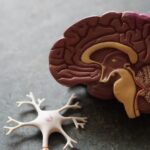 Acromegaly is a rare disease characterized by a chronic exposition to growth hormone (GH) and insulin-like growth factor-1 (IGF-1), caused in most cases by a pituitary GH-secreting adenoma. Chronic GH excess induces systemic complications (metabolic, cardiovascular, respiratory, neoplastic, and musculoskeletal) and increased mortality if not appropriately treated. Recent epidemiological data report an improved life span of patients with acromegaly probably due to better acromegaly management; additionally, the number of pituitary incidentaloma in general population also increased over time due to more frequent imaging. Therefore, the number of elderly patients, newly diagnosed with acromegaly or in follow-up, is expected to grow in the coming years and clinicians will need to be aware of particularities in managing these patients. For more information click here.
Acromegaly is a rare disease characterized by a chronic exposition to growth hormone (GH) and insulin-like growth factor-1 (IGF-1), caused in most cases by a pituitary GH-secreting adenoma. Chronic GH excess induces systemic complications (metabolic, cardiovascular, respiratory, neoplastic, and musculoskeletal) and increased mortality if not appropriately treated. Recent epidemiological data report an improved life span of patients with acromegaly probably due to better acromegaly management; additionally, the number of pituitary incidentaloma in general population also increased over time due to more frequent imaging. Therefore, the number of elderly patients, newly diagnosed with acromegaly or in follow-up, is expected to grow in the coming years and clinicians will need to be aware of particularities in managing these patients. For more information click here.
Commission encourages and facilitates cross-border treatment of patients and deployment of medical staff
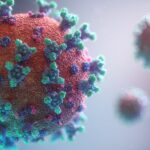 The coronavirus pandemic is putting healthcare systems across the EU under unprecedented and increasing pressure. To support and encourage cross-border healthcare cooperation between national, regional and local authorities, the Commission has today issued practical guidance to Member States. Cooperation across borders can help ease the pressure on overburdened hospitals by transferring patients suffering from coronavirus for treatment in Member States where hospital places are available. The Commission will also support Member States or non-governmental organisations to send qualified teams of medical personnel to offer assistance across borders. For more information click here.
The coronavirus pandemic is putting healthcare systems across the EU under unprecedented and increasing pressure. To support and encourage cross-border healthcare cooperation between national, regional and local authorities, the Commission has today issued practical guidance to Member States. Cooperation across borders can help ease the pressure on overburdened hospitals by transferring patients suffering from coronavirus for treatment in Member States where hospital places are available. The Commission will also support Member States or non-governmental organisations to send qualified teams of medical personnel to offer assistance across borders. For more information click here.
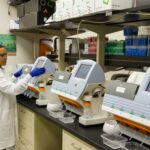 Wilson’s disease (WD) is an autosomal recessive disorder caused by ATP7B mutations. Subjects with only one mutation may show clinical signs and individuals with biallelic changes may remain asymptomatic. We aimed to achieve a conclusive genetic diagnosis for 34 patients clinically diagnosed of WD. Genetic analysis comprised from analysis of exons to WES (whole exome sequencing), including promoter, introns, UTRs (untranslated regions), besides of study of large deletions/duplications by MLPA (multiplex ligation-dependent probe amplification). Biallelic ATP7B mutations were identified in 30 patients, so that four patients were analyzed using WES. For more information click here.
Wilson’s disease (WD) is an autosomal recessive disorder caused by ATP7B mutations. Subjects with only one mutation may show clinical signs and individuals with biallelic changes may remain asymptomatic. We aimed to achieve a conclusive genetic diagnosis for 34 patients clinically diagnosed of WD. Genetic analysis comprised from analysis of exons to WES (whole exome sequencing), including promoter, introns, UTRs (untranslated regions), besides of study of large deletions/duplications by MLPA (multiplex ligation-dependent probe amplification). Biallelic ATP7B mutations were identified in 30 patients, so that four patients were analyzed using WES. For more information click here.
Survey on the impact of COVID-19 on rare disease patients and their families in Bulgaria
 The Information Center for Rare Diseases and Orphan Drugs (ICRDOD) is conducting a survey on the impact of COVID-19 on rare disease patients and their families in Bulgaria. The survey aims to examine the experiences and difficulties of patients with rare diseases and their families, related to COVID-19 and the medico-social situation in our country. It contains 11 questions and takes no more than 15 minutes to complete. The survey is anonymous and the answers will be used only for the purposes of this survey. If you would like to participate in our survey you can fill it out here.
The Information Center for Rare Diseases and Orphan Drugs (ICRDOD) is conducting a survey on the impact of COVID-19 on rare disease patients and their families in Bulgaria. The survey aims to examine the experiences and difficulties of patients with rare diseases and their families, related to COVID-19 and the medico-social situation in our country. It contains 11 questions and takes no more than 15 minutes to complete. The survey is anonymous and the answers will be used only for the purposes of this survey. If you would like to participate in our survey you can fill it out here.
 On 24 March, the European Commission launched the “COVID-19 Clinical Management Support System” with the aim to support clinicians in hospitals that are currently facing the coronavirus emergency all over Europe. Based on the experience with the European Reference Networks, the initiative will help to create rapid connections across Europe among the hospitals indicated by the Member States as reference centres for COVID-19. Clinicians can rely on a dedicated helpdesk managed by DG SANTE to set up web conferences and exchange with their peers in Europe on possible treatments, and on how to handle severe and complex cases. This synergy aims to speed up the adoption of specific treatment options and help reduce some of the uncertainties due to the unknown aspects of the virus. Ultimately, it is in the vital interest of the patients infected with COVID-19 that their doctors can discuss their cases, and get the best advice possible. For more information click here.
On 24 March, the European Commission launched the “COVID-19 Clinical Management Support System” with the aim to support clinicians in hospitals that are currently facing the coronavirus emergency all over Europe. Based on the experience with the European Reference Networks, the initiative will help to create rapid connections across Europe among the hospitals indicated by the Member States as reference centres for COVID-19. Clinicians can rely on a dedicated helpdesk managed by DG SANTE to set up web conferences and exchange with their peers in Europe on possible treatments, and on how to handle severe and complex cases. This synergy aims to speed up the adoption of specific treatment options and help reduce some of the uncertainties due to the unknown aspects of the virus. Ultimately, it is in the vital interest of the patients infected with COVID-19 that their doctors can discuss their cases, and get the best advice possible. For more information click here.
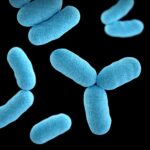 Regulators, scientists, clinicians and patient advocacy groups often cite ~7,000 as the number of rare diseases, or between 5,000 and 8,000 depending on the source. Why do estimates of the number of rare diseases vary so widely? One reason is the aforementioned lack of consistency in defining discrete disease entities and their incidence in different countries or demographics. Another reason is computational differences and imperfections in the current terminologies. Some terminologies do not include chromosomal disorders, or other structural variations such as inversions, while others do not include rare diseases with environmental causes, such as toxin exposure. For more information click here.
Regulators, scientists, clinicians and patient advocacy groups often cite ~7,000 as the number of rare diseases, or between 5,000 and 8,000 depending on the source. Why do estimates of the number of rare diseases vary so widely? One reason is the aforementioned lack of consistency in defining discrete disease entities and their incidence in different countries or demographics. Another reason is computational differences and imperfections in the current terminologies. Some terminologies do not include chromosomal disorders, or other structural variations such as inversions, while others do not include rare diseases with environmental causes, such as toxin exposure. For more information click here.
Is air pollution affecting the disease activity in patients with systemic lupus erythematosus?
 It has been documented that several major components of air pollution, including trace elements and polycyclic aromatic hydrocarbons, are associated with the prevalence of systemic lupus erythematosus (SLE). However, the impact of air pollution on the SLE disease activity is still elusive. In this paper, we review the current evidence investigating the link between air pollution, especially when measured as PM2.5, and SLE severity and activity. Current evidence suggests that variations in air pollution may influence the disease activity in patients with SLE. However, the sample size, methodological biases, and differences across the studies make further research mandatory. Understanding the increased burden of SLE and its complications, not only from a medical, but also from a socio-demographic perspective, including an exposure to pollutants, should have implications for resource allocation and access to subspecialty care. For more information click here.
It has been documented that several major components of air pollution, including trace elements and polycyclic aromatic hydrocarbons, are associated with the prevalence of systemic lupus erythematosus (SLE). However, the impact of air pollution on the SLE disease activity is still elusive. In this paper, we review the current evidence investigating the link between air pollution, especially when measured as PM2.5, and SLE severity and activity. Current evidence suggests that variations in air pollution may influence the disease activity in patients with SLE. However, the sample size, methodological biases, and differences across the studies make further research mandatory. Understanding the increased burden of SLE and its complications, not only from a medical, but also from a socio-demographic perspective, including an exposure to pollutants, should have implications for resource allocation and access to subspecialty care. For more information click here.
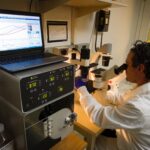 X‑linked hypophosphatemic rickets (XLH, OMIM #307800) is a rare genetic metabolic disorder caused by dysregulation of fibroblast-like growth factor 23 (FGF23) leading to profound reduction in renal phosphate reabsorption. Impaired growth, severe rickets and complex skeletal deformities are direct consequences of hypophosphatemia representing major symptoms of XLH during childhood. In adults, secondary complications including early development of osteoarthritis substantially impair quality of life and cause significant clinical burden. With the global approval of the monoclonal FGF23 antibody burosumab, a targeted treatment with promising results in phase III studies is available for children with XLH. Nevertheless, complete phenotypic rescue is rarely achieved and remaining multisystemic symptoms demand multidisciplinary specialist care. Coordination of patient management within the major medical disciplines is a mainstay to optimize treatment and reduce disease burden. This review aims to depict different perspectives in XLH patient care in the setting of a multidisciplinary centre of expertise for rare bone diseases. For more information click here.
X‑linked hypophosphatemic rickets (XLH, OMIM #307800) is a rare genetic metabolic disorder caused by dysregulation of fibroblast-like growth factor 23 (FGF23) leading to profound reduction in renal phosphate reabsorption. Impaired growth, severe rickets and complex skeletal deformities are direct consequences of hypophosphatemia representing major symptoms of XLH during childhood. In adults, secondary complications including early development of osteoarthritis substantially impair quality of life and cause significant clinical burden. With the global approval of the monoclonal FGF23 antibody burosumab, a targeted treatment with promising results in phase III studies is available for children with XLH. Nevertheless, complete phenotypic rescue is rarely achieved and remaining multisystemic symptoms demand multidisciplinary specialist care. Coordination of patient management within the major medical disciplines is a mainstay to optimize treatment and reduce disease burden. This review aims to depict different perspectives in XLH patient care in the setting of a multidisciplinary centre of expertise for rare bone diseases. For more information click here.
